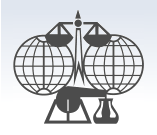International Union of Pure and Applied Chemistry: Difference between revisions
imported>Milton Beychok (Revised and expanded this as an article. More to come within the next few days.) |
imported>Milton Beychok m (Spelling typo fixed) |
||
| Line 3: | Line 3: | ||
{{Image|IUPAC Logo.png|right|157px|IUPAC Logo.}} | {{Image|IUPAC Logo.png|right|157px|IUPAC Logo.}} | ||
The '''International Union of Pure and Applied Chemistry''' (IUPAC) is a non-governmental | The '''International Union of Pure and Applied Chemistry''' (IUPAC) is a non-governmental scientific organization serving to advance all aspects of the chemical sciences and to contribute to the international application of [[chemistry]] by scientists, engineers and others. It is an association of organizations, called "National Adhering Organizations", which represent the chemists of different member countries. As of July 2009, there were 54 "National Adhering Organizations" plus some other countries that are linked to IUPAC as "Associate National Adhering Organizations".<ref name=Agenda>[http://old.iupac.org/symposia/conferences/ga09/Council_Agenda_Book_2009.pdf IUPAC Council Agenda Book, July 2009]]</ref><ref>[http://www.iupac.org/nao National Adhering Organizations] From the new website of the IUPAC, accessed on February 15th, 2010.</ref> | ||
The international headquarters office of the IUPAC is located in [[Zurich]], [[Switzerland]]. The administrative office, known as the "IUPAC Secretariat" and headed by the the IUPAC executive director, is located in [[Research Triangle Park]], [[North Carolina]], [[United States]].<ref name=Agenda/> | The international headquarters office of the IUPAC is located in [[Zurich]], [[Switzerland]]. The administrative office, known as the "IUPAC Secretariat" and headed by the the IUPAC executive director, is located in [[Research Triangle Park]], [[North Carolina]], [[United States]].<ref name=Agenda/> | ||
Revision as of 00:42, 16 February 2010
The International Union of Pure and Applied Chemistry (IUPAC) is a non-governmental scientific organization serving to advance all aspects of the chemical sciences and to contribute to the international application of chemistry by scientists, engineers and others. It is an association of organizations, called "National Adhering Organizations", which represent the chemists of different member countries. As of July 2009, there were 54 "National Adhering Organizations" plus some other countries that are linked to IUPAC as "Associate National Adhering Organizations".[1][2]
The international headquarters office of the IUPAC is located in Zurich, Switzerland. The administrative office, known as the "IUPAC Secretariat" and headed by the the IUPAC executive director, is located in Research Triangle Park, North Carolina, United States.[1]
History
IUPAC Divisions
Nomenclature books
Standards
Congresses and other meetings
References
- ↑ 1.0 1.1 IUPAC Council Agenda Book, July 2009]
- ↑ National Adhering Organizations From the new website of the IUPAC, accessed on February 15th, 2010.
